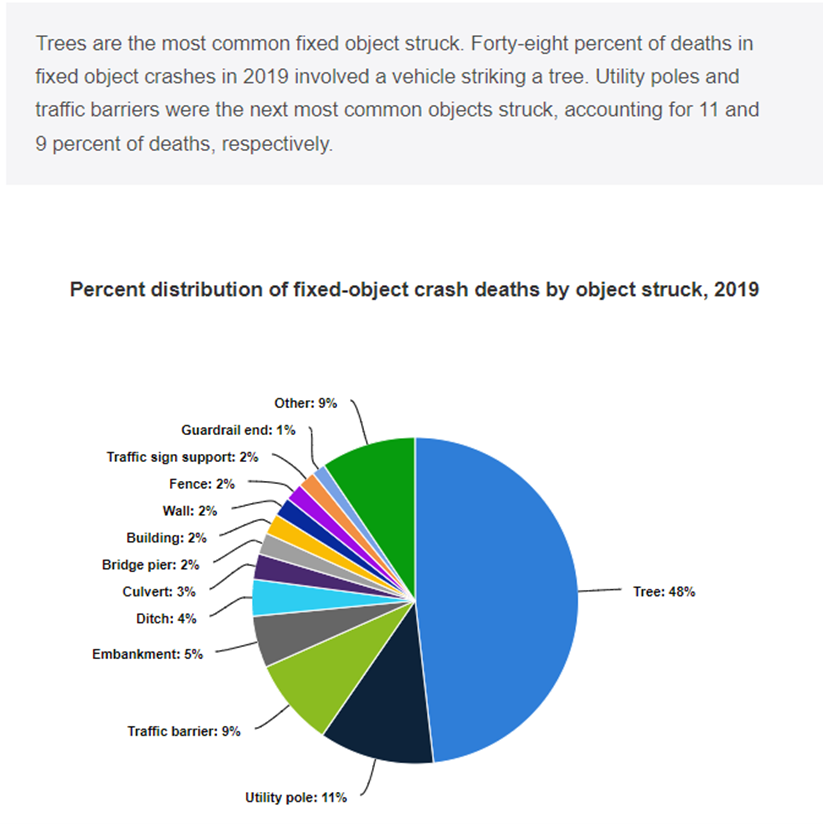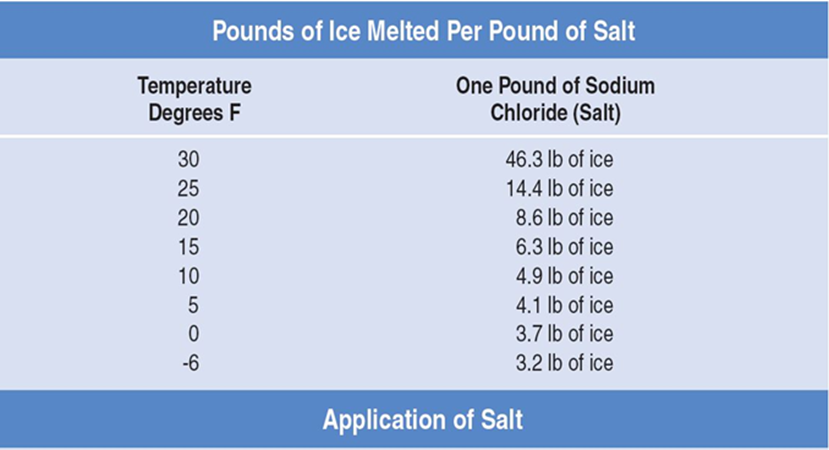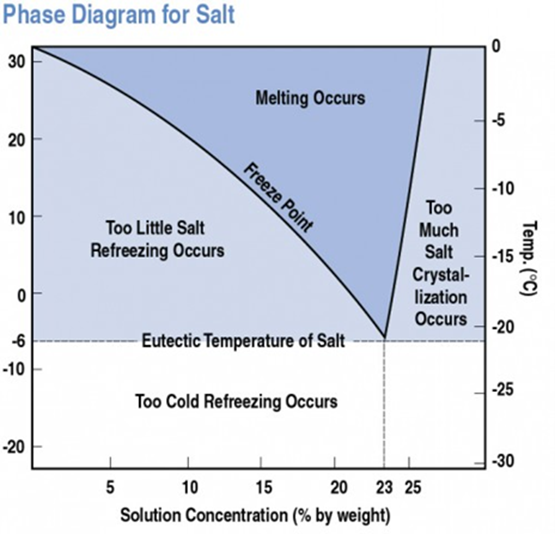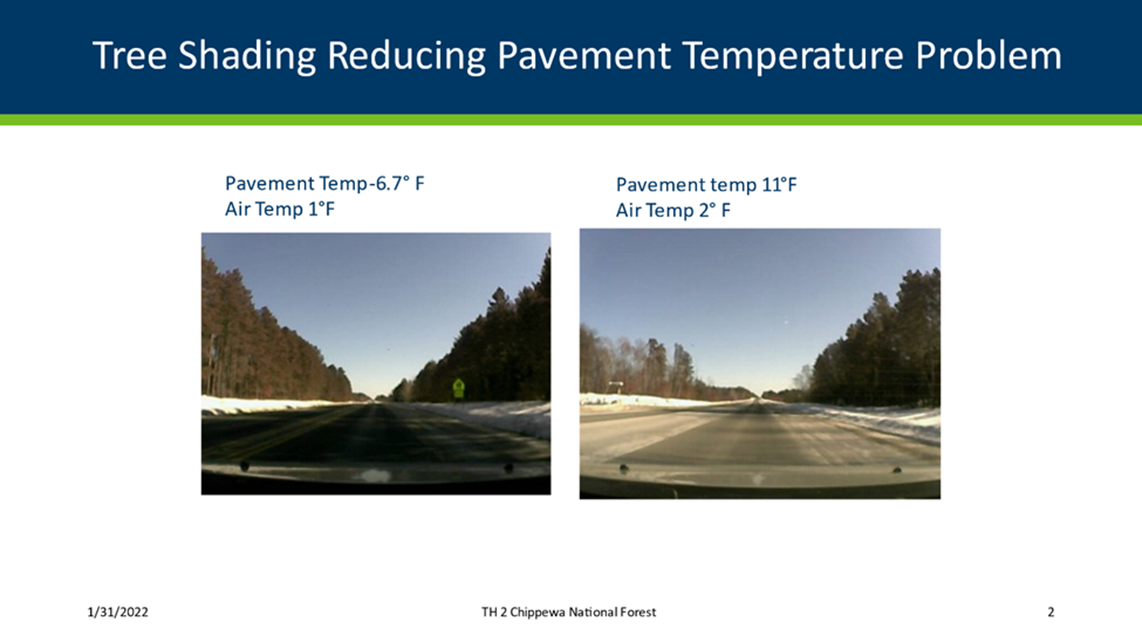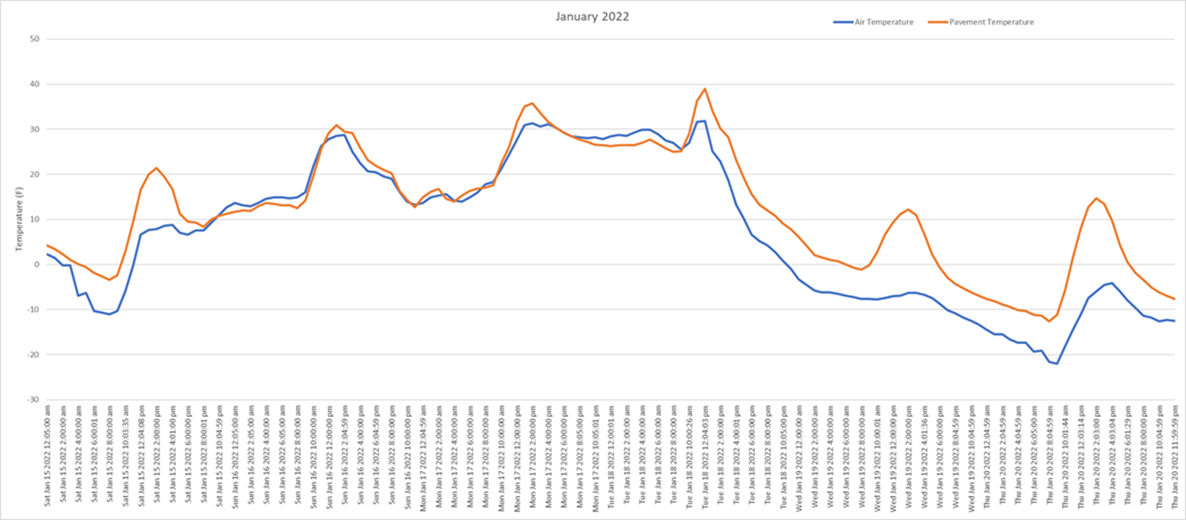Watch the project overview video
Questions and answers
Highway 34 is a scenic byway. Will the tree removals impact the scenic byway designation?
No, the Lake Country Scenic Byway will not and has not been at risk of losing its scenic byway designation at any time during this project.
Has MnDOT listened to public feedback about tree removals?
Public input has made a significant impact on our project and its scope of work. Based on the feedback and comments that we've received and gathered throughout the project development process, we have refined the design of the project, minimizing impacts and committing to additional mitigation measures. Most notable of the changes is the amount of tree removals. We have been able to scale back the tree removals without losing the safety benefits of the project.
We have hosted two public meetings, one virtually in January 2022 and one in-person in October 2022 held at MState in Detroit Lakes.
Why do the trees need to be removed? What advice was received from professional foresters such as those from the DNR? Was this practical forest removal and marketing advice or was it ecological forest sustainability, wildlife habitat, and aesthetics advice or all the above?
MnDOT has had discussions with MN DNR in recent years to address the dying trees along the corridor, focusing on specific tree removals. These discussions have occurred to help control some of the forest health issues observed along the corridor.
Notes on from site visit performed by MnDOT Urban Forester/Roadside Vegetation Manager on July 17th, 2019.
- Two-lined chestnut borer (Agrilus bilineatus) - https://www.dnr.state.mn.us/treecare/forest_health/tlcb/index.html
- Both red oak and bur oak are likely affected in some locations. Two-lined chestnut borer is related to emerald ash borer that affects ash trees. Difference, two-lined chestnut borer is native to Minnesota and the trees somewhat tolerate it. Usually two-lined chestnut borer successfully attacks trees after periods of drought or some other stress event. Northwest Minnesota has had drought events in the past ten years. Often the symptoms are random branches at the top of the tree are killed – possibly ending with the whole tree being infested and dying. Bur oaks are better at defending themselves from the insect attack – but, over time may also succumb to the infestation.
- Armillaria root rot - https://extension.umn.edu/plant-diseases/armillaria-root-rot is a fungus that is basically present everywhere that trees grow. It is like two-lined chestnut borer in the sense it can infect trees when trees have been stressed during periods of drought (or some other stressor like excess water). Symptoms can be like two-lined chestnut borer causing dieback at the top of the tree followed by eventual tree death. Armillaria root rot attacks many species besides oaks.
- Dutch elm disease of the American elm (Ulmus americana) - https://www.mda.state.mn.us/dutch-elm-disease. Along the corridor there are several locations where there are groups of dead or dying American elm trees. American elms and Dutch elm disease are still present in the landscape.
- Changes in water levels near wetlands were observed. Trees near wetlands are often affected by changes in hydrology – either too much water (beaver activity, flooding, or a very wet year) or too little water like a drought or removal of a beaver dam. The fluctuations in water levels can kill tree roots and if the tree cannot respond quick enough to the change the water fluctuations can kill trees. These trees are often green or black ash, American elm, or silver maple. Tree species that tolerate the wetlands that are growing too close to the water on occasion may be affected.
Forest sustainability, wildlife needs, and aesthetics were among our considerations. It is recognized that one way to preserve the beauty of the landscape is to properly maintain it.
Additionally, tree removals will satisfy several other priorities with safety being the most important. Other priorities include forest sustainability, wildlife needs, and aesthetics.
How does removing trees improve safety?
Clear Zone safety: Safety is MnDOT’s top priority. In November of 2020, this section of highway experienced a fatality where a vehicle left the roadway and crashed into a tree. By removing trees within the clear zone, MnDOT seeks to prevent fatalities. MnDOT’s Strategic Highway Safety Plan (SHSP) includes this goal of maintaining the Clear Zone.
Link to MnDOT’s Strategic Highway Safety Plan (SHSP): http://www.dot.state.mn.us/trafficeng/safety/shsp/mn-shsp-2020-24.pdf
MnDOT proactively improves highway safety by constructing roadway features such as rumble strips and enhanced striping to reduce the number of lane departures. Our first step is to do everything we can to keep vehicles on the roadway. Along with those efforts of keeping vehicles on the road, MnDOT is being proactive by removing obstacles like trees within the clear zone to protect vehicles in the chance they leave the roadway. Vehicles leaving the roadway is a national problem as well as a problem in the State of Minnesota. This is not unique. In the past 5 years there have been 412 serious injury crashes and 133 fatalities in Minnesota due to vehicles leaving the roadway and impacting trees. 133 fatalities are too many, the tree removals are necessary.
Captain Brian Cheney from Minnesota State Patrol and other local emergency personnel are supportive of the proposed tree removals on this corridor to reduce the frequency and severity of crashes.
Although this section of road operates within the normal range when compared to statewide averages for crashes on similar two-lane rural highways, Highway 34 is identified as having a higher-than-average Severe Lane Departure Density (crashes per mile per year) in the project limits. Additionally, the District 4 Safety Plan prioritizes this section of road in to three segments and has prioritized them as - #4, #14 and #44 (out of 183 segments in District 4) for consideration when planning safety projects.
So what is the clear zone? The intent and design of the clear zone is for drivers to recover and successfully stop a vehicle if they exit the roadway. The clear zone varies slightly throughout the project corridor but is generally between 45 and 55 feet. An additional 10 feet is added to the clear zone for MnDOT to maintain this area without damaging expensive maintenance equipment. The trees and obstructions will be removed from 55 to 65 feet either side of the highway centerline.
Consider that distance for a moment: the traffic lane is 12 feet wide, the paved shoulder is an additional 6 feet wide with a maintained gravel edge of approximately 1 foot. The initial sloped portion of the ditch (in-slope) is typically in the range of 15+ feet. So, the first 34+ feet are already treeless. That leaves an additional 31 feet that may or may not contain trees. Roadside ditch profiles continue from the in-slope across the ditch bottom and up what is termed the backslope. Roadside ditch profiles along Minnesota Highway 34 are quite variable in depth due to topography.
Tree cover is variable along the roadside. In several areas this “Clear Zone” tree removal will be unnoticeable as there currently are no trees. In other areas there may be 5 to 10 feet of trees that will require removal from the clear zone. Besides clearing a path for drivers that inadvertently exit the roadway, there are several maintenance purposes for this work. Trees encroach on the roadway over time. To maintain site lines, prevent trees from falling on the road and to remove insect and disease infestations as well as the removal of high-risk dead or decayed trees it is necessary to perform this clean-up work.
MnDOT is taking a proactive approach to driver safety by removing trees within the clear zone. See below for data supporting removal of trees from the clear zone.
Below is the National Average data of fixed-object crashes that support the removal of trees:
Figure 1 - 48% is equal to 3,496 deaths. Insurance Institute for Highway Safety-Highway Loss Data Institute website accessed January 2022.
Shade Reduction: The second area of proposed tree removals is intended to help with shade reduction of the roadway. Reducing the shading allows the sun to directly impact the pavement and raise the pavement temperature. Increasing the pavement temperature allows maintenance efforts to be more effective and efficient.
Shade reduction is a tool used across Minnesota and the United States wherever the shade of trees negatively impacts the efforts to improve winter driving conditions.
Salt is the least expensive and most abundant deicing material on the market. It also negatively impacts our environment. By reducing salt usage MnDOT is both positively impacting the environment and saving taxpayer dollars at the same time.
MnDOT along with partner agencies have put forth and continue to put forth considerable efforts and research into improving winter driving.
The following can be found in MnDOT’s, Winter Maintenance Best Practices Manual (https://mndot.org/maintenance/files/salt_sustainability/BestPractices_FINAL_2-25-19.pdf) for an introduction.
Introduction: Salt can have an adverse effect on nearby environments and groundwater sources. MnDOT seeks to reduce the use of salt on roadways, while maintaining a high level of performance regarding level of service recovery in winter operations. This document offers suggestions regarding the use of salt for roadway snow and ice control, with an emphasis on sustainable practices.
A literature review of 30 published documents from a wide variety of sources and interviews with experts and practitioners in each of the MnDOT district are the basis for the practices recommended.
MnDOT is one of the lead agencies for Clear Roads a highway research consortium (MnDOT is on the advisory committee) and has a strong research program looking at alternative chemicals.
In November of 2011 MnDOT launched the Minnesota GO visioning process to better align the transportation system with what Minnesotans expect for their quality of life, economy, and natural environment. The effort is based on an understanding that transportation is a means to other ends, not an end in itself. Below is a Table from Minnesota GO which displays the commitment to the environment and reducing salt use.
Measure |
Target |
Reporting |
Annual greenhouse gas emissions from the transportation sector |
29.5 million tons CO2e by 2025 |
Report total and trend |
Number of criteria pollutants below National Ambient Air Quality Standards threshold each year |
All criteria pollutants below threshold |
Report number of pollutants not meeting standards and which |
Total percentage of acres planted with native seeds on MnDOT projects |
To be determined |
Report percent and trend |
Total percent of light fixtures using LED luminaries on MnDOT roadways |
100% |
Report percent |
Annual percent of MnDOT omnibus survey respondents perceiving safe environments for bicycling / walking |
No target |
Report percent and trend |
Annual total road salt used for snow and ice control on the state highway system compared to modeled optimal salt use |
Less than 10% more than modeled optimal quality |
Report percentage difference and trend |
Where We Want to Go - MnDOT’s target is not to exceed the decision model recommendation. MnDOT is continually working to reduce salt use, because of its harmful impacts to the environment, while simultaneously improving winter road conditions and providing safe roads.
MnDOT has taken a leadership role in finding ways to meet the public and economic demands for safe winter driving conditions, while striving for the most intelligent use of salt and other winter chemicals. Historically, MnDOT has worked with national partners to develop and utilize technology including the Maintenance Decision Support System (MDSS) and Mobile Data Collection (MDC) to identify optimal salt/chemical usage. The agency aims to use no more than ten percent more than the recommended salt use suggested by MDSS for a sustainable level of salt usage.
MnDOT's salt sustainability efforts include using liquid chemical deicers (in addition to salt or sand), plows to mitigate the amount of salt needed, driver training to teach new snow plowing techniques, research, and alternative deicers. MnDOT also uses mobile observations to optimize salt usage and decision making. MnDOT also uses an array of blowing snow control measures such as living snow fences, structural snow fences, standing corn rows, strategically placed bales, native tall grass wildflower prairie plantings, and road design elements to further reduce the need for snow management.
By reducing the shading on this segment of roadway MnDOT expects the following:
- A reduction in salt use of 48,000 pounds.
- A savings of 197 regular hours, 40 overtime hours and 4,380 miles driven by snow/ice removal equipment.
Below is some information regarding the effectiveness of salt at different temperatures and reinforces the benefits of increasing the pavement temperature to allow the most effective and efficient use of maintenance efforts.
A reference from the Snow fighter’s Handbook published by the Salt Institute shows just how quickly salt’s effectiveness plunges with temperature:
Additionally, MnDOT has many weather monitoring stations that continually gather data. Below are some examples of the data collected.
Chart illustrating short wave radiation, or direct sunlight each day for a period from November through April. This information is continually collected by MnDOT:
Pictures displaying the difference in pavement temperature when shaded vs sunlight. As shown below the temperature difference is nearly 18 degrees in this instance.
Below is an example of a recent 5-day period in January of 2022 that a MnDOT weather station gathered. The orange line represents the pavement temperature, and the blue line represents the air temperature. The two spikes on the right show a temperature difference of 19 degrees and 21 degrees Fahrenheit due to sunlight impacting the pavement.
Is this the first time MnDOT is removing trees to reduce shading?
Shade reduction via tree removal is not a new tool for MnDOT. The practice is used statewide as evidenced by the following short but not all-inclusive list:
- District 1 along Scenic North Shore Drive Conifer stands along the south side of the road were targeted to reduce shade issues.
- District 1 along Hwy 169 and in the near future along Interstate 35. Both projects have stated goals of reducing shading as well as recovering clear zone.
- District 2 along Hwy 2 and Hwy 200. Several projects with stated goals of reducing shading as well as recovering clear zone.
- District 6 will perform clear zone and shade reduction along various corridors soon.
Has MnDOT considered silvicultural practices?
Yes, that is one reasons the MnDNR is involved. Often Silviculture is thought of only in the terms of timber improvement – or stand improvement for timber production – traditional forestry values. However, MnDOT is not utilizing silvicultural practices for traditional forestry outcomes.
But the USDA Forest Service has this definition for silviculture: Silviculture (fs.fed.us)
Silviculture is the art and science of controlling the establishment, growth, composition, health, and quality of forests and woodlands to meet the diverse needs and values of landowners and society such as wildlife habitat, timber, water resources, restoration, and recreation on a sustainable basis.
Two take-aways from that, 1) meet the diverse needs and values of landowners 2) on a sustainable basis.
- MnDOT has diverse needs and different values than other forest owners.
- MnDOT’s goal is not traditional forestry, but trees may be utilized for timber products.
MnDOT is attempting to promote the health of the forest through a selective harvest with a goal of shade reduction. Shade reduction promotes safe travel on Highway 34. Shade reduction promotes an age class composition change in the forest. Control growth – remove taller trees with the silvicultural goal of promoting sunshine (safety) on the road. Use less deicing chemical.
- Control growth – remove taller trees with the silvicultural goal of promoting sunshine (safety) on the road. Use less deicing chemical.
- Control composition – in terms of species regeneration – reduce the number of conifers overall to promote sun penetration in winter. More hardwoods – less winter shading, more fall color attraction! MnDOT is not intentionally selecting against conifers; however, fewer conifers might be an outcome.
- Promote health of the forest – The understory will benefit from additional light. The understory will respond to additional light with a flush of growth. A common opinion is the understory the first year after any forestry operation is less beautiful than what was originally there is often unsightly
In the long term the forest will be healthy. There are trees in the understory and shrubs, grasses, other species in the seed bank waiting to respond to increased light to the forest floor.
Traditional forestry values are growth (faster and bigger), health and quality (tall and straight), again usually for timber – larger growth in good health results in higher quality trees and timber products. A traditional selective harvest could focus on removal of insect/disease problems, smaller, weaker, malformed trees to allow more light and nutrient for already larger straighter (better) trees. Or, on the flip side, a traditional selective harvest may remove larger trees because they are marketable, and this opens the canopy for the understory trees to now grow faster with better light, more water, and nutrients. Sustainable - trees for the next generation!
This selective harvest is for silvicultural reasons – not necessarily “traditional forestry” reasons.
Are you clear cutting the forest?
There is no intent for this to be a clear-cut.
It is possible the removal of trees will be noticeable. The intent isn’t to change the scenic beauty of the road, but rather move it further away from the traveling public to increase safety.
The project description discusses two types of tree removal: clear zone and shade reduction. See above question How does removing trees improve safety?
Will this cause more deer collisions?
MnDOT expects deer collisions to decrease by moving the tree line further back, away from the road.
MnDOT has collected data on deer collisions in the past. At the time the data was collected it indicated that this segment of roadway had the highest deer hit recovery in District 4.
Evidence suggests that moving the tree line further back, away from the road, may reduce deer collisions, not increase.
Doesn’t removing the trees negatively impact climate change?
Forest management practices can increase a forests potential for capturing and storing carbon. Mature forests have captured a good deal of carbon and as they mature the rate at which they capture carbon slows down. Forest stands of mixed age classes, more young trees, will capture and store carbon at higher rates than the mature forests described above. When given the opportunity such as a disturbance related canopy opening, young trees in the understory will respond to increased sunlight and grow quickly. Through that rapid growth, young trees capture carbon at a high rate as they grow to become larger, mature trees.
Additionally, consideration must be given to wood utilization when a stand is harvested. If harvested wood is processed as firewood or biofuel, the stored carbon is released to the environment as it is utilized. On the other hand, if the wood is processed for a long-term use as a timber product such as dimensional lumber, plywood, or oriented strand board the carbon remains tied up as long as the product remains stable. Slow release of carbon also takes place as wood is allowed to decay naturally.
Will this negatively impact the lady’s slippers?
On Highway 34 MnDOT is aware of locations where lady’s slippers exist. Those locations will be identified, and efforts will be made such that they are avoided.
Please know that many different species of orchids (lady’s slippers) exist. https://files.dnr.state.mn.us/eco/mcbs/mn_orchid_list.pdf.
Showy lady’s slippers (Cypripedium reginae) are NOT listed or protected in Minnesota as threatened, endangered, or special concern species. Showy lady’s slippers are not included on a watchlist as a potential candidate for listing in Minnesota. See Minnesota DNR Rare Species Guide.
Second, many people assume that the unique status of “State Flower” bestowed upon the showy lady’s slipper would also bring protections like those provided to State listed threatened and endangered species. However, designation as the “State Flower” provides no unique protections (Minnesota Statute 1.142 State Flower). Lady’s slippers are protected under Minnesota Statute 18H.18 Conservation of Certain Wildflowers. This statute discusses the collection and sale of specific native plants that are to be offered for sale. The Minnesota Department of Agriculture has responsibility for administering those statutes and granting permits as allowed under those statutes.
Having stated that, MnDOT continually makes extra efforts to protect Minnesota’s state flower, the showy lady’s slipper, along highway corridors. Along Highway 34, several locations have been brought to MnDOT’s attention and efforts will continue in 2022 to positively identify and mark those as well as any additional locations.
As part of MnDOT’s planning process, steps are taken to locate unique habitats and species. Various means of identifying unique roadside habitats include database and roadside searches. Public input and comment are key to this process since neighboring property owners typically know where those unique habitats are located that might harbor a unique specimen. All these inputs may result in formal roadside surveys.
Under worst case scenarios where avoidance is not possible, MnDOT has relocated lady’s slippers. Lady’s slippers have been moved to Minnesota State Parks, wildlife management areas and other state or federal lands. It is not common practice to relocate lady’s slippers to roadside ditches. In 2019, showy lady’s slippers were moved to the Northland Trailhead vicinity on Minnesota Highway 34. Many of those relocated plants are readily visible to the traveling public and visitors to the trailhead parking area.
Along Highway 34 showy lady’s slippers (Cypripedium reginae) have been brought to MnDOT’s attention. Showy lady’s slippers are hardier (more tolerant) than some of the other species in the genus. More extensive root systems and sun preferences allow them to thrive in roadside habitats. These statements are derived from writings by Welby Smith (Minnesota DNR) and from conversations with Welby and David Remucal (University of Minnesota Landscape Arboretum).
Welby Smith in his book Native Orchids of Minnesota points out that showy lady’s slippers do best in, “partial shade or direct sunlight, not in deep shade.”
Welby Smith makes a direct comment regarding roadside lady’s slippers. Speaking to where showy lady’s slippers might grow: “I would put the odd roadside ditch where showy’s sometimes make a brief appearance. I say brief because roadside habitats tend to get scraped or graded on a regular basis.”
Roadside habitats in general are not ideal for plant growth. It is not unusual for soil chemistry (pH, nutrients), soil types (sandy, gravelly, compacted) and water regimes to differ significantly from soils found in neighboring forests, grasslands, and wetlands. Roadsides are constructed to support the road and amazingly, on occasion, plants discover a niche in that constructed environment that is conducive to their growth.
Even though roadside ditch’s purpose is not to provide habitat for rare plants that the public may desire to see, if the circumstance arises that lady’s slippers are present, MnDOT is putting additional efforts into protecting those locations to maintain that plant community.
Again, MnDOT is aware of locations where lady’s slippers exist and will be marking those areas for the contractor to avoid.
How has MnDOT’s commitment to widespread use of DOT right of way for pollinator habitat been incorporated into the construction design and maintenance practices planned for Hwy 34 and other highways in District 4?
MnDOT has a goal to plant 70% of project areas with native seed mixes. MnDOT has 21 seed mixes, 11 are native mixes and 6 of the 10 temporary and non-native mixes contain forbs.
MnDOT also plants trees and shrubs on the roadsides. In 2014, an internal review of landscape plans found that in urban areas, about 50% were native trees and shrubs. In rural areas, about 70% of trees and shrubs were native.
Tree and brush removals help increase sun penetration into forests increasing flowering of forbs and shrubs. Along Interstate 35 between Hinckley and Cloquet in 2017, brush control activities increased the number of flowering plants on the right of way due to increased sunlight penetration.
Partnerships with the MnDNR have in the past helped establish habitat on MnDOT right-of-way that is adjacent to MnDNR managed lands with seed from those lands.
Partnerships have been promoted with governmental and non-governmental groups to establish habitat through the Highway Sponsorship Program and the Community Landscape Partnership Program.
MnDOT is sponsoring research and watching national research on pollinators and roadsides to determine the best management practices for these areas in MN.
Why not reduce the speed limit?
The answer to this is listed below but can also be found on MnDOT’s Speed Limit page.
Will lowering the speed limit reduce speeds?
No. Studies show there is little change in the speed pattern after the posting of a speed limit. The driver is much more influenced by the roadway conditions.
Will lowering the speed limit reduce crash frequency?
No. Although lowering the speed limit is often seen as a cure-all in preventing crashes, this is not the case. Crashes are most often the result of driver inattention and driver error. However, if a posted speed limit is unrealistically low, it creates a greater speed variance (i.e., some drivers follow the speed limit while most drive the reasonable speed). This speed variance can contribute to crashes.
Why do we even have speed limits?
A uniform speed of vehicles in a traffic flow results in the safest operation. The posted speed limits can keep the traffic flowing smoothly provided the majority of drivers find the speed limits reasonable. To best do this, the limits must be consistent throughout the state. The speed limits also give the motorist an idea of a reasonable speed to drive in an unfamiliar location. The speed limits are used by police officials to identify excessive speeds and curb unreasonable behavior.

